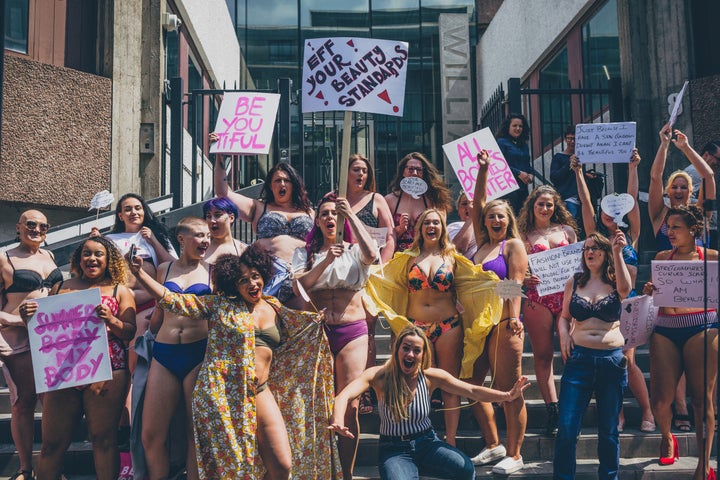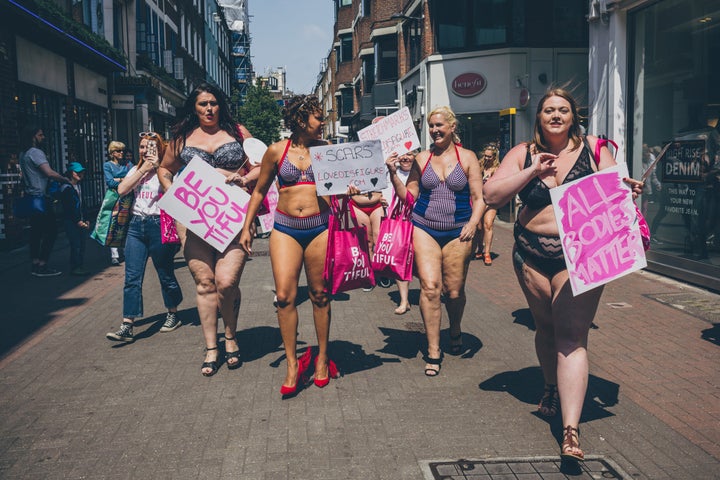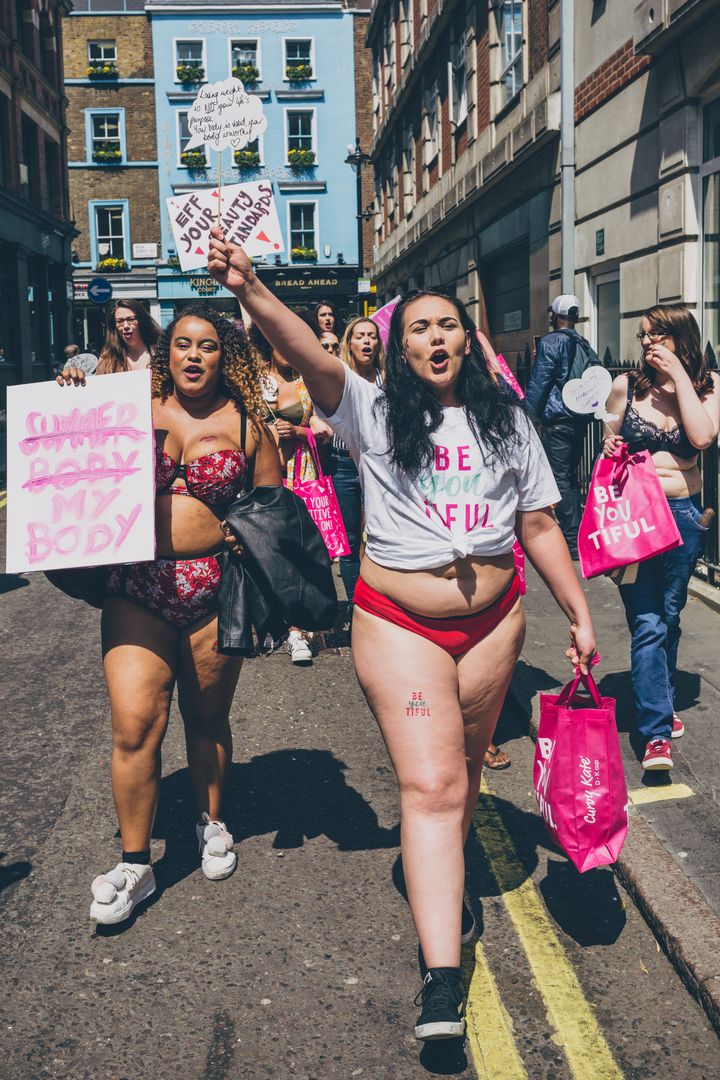
Look at the pictures of this week’s body confidence flashmob in Soho. Look at the defiance, pride and confidence these semi-clad and diverse women are exhibiting.
You’d never guess that every single one of them confessed to me in the hour or so before the protest that they almost didn’t show. You wouldn’t think that two of the most prominent campaigners who were due to join us are missing, having bailed at the last minute. You couldn’t guess that I, as co-organiser and leader of the march, had a panic attack that very morning.
That’s the element that’s missing from so much of the coverage of the body positivity movement. Their representatives are hailed as ‘fearless’ and ‘brave’ as though they’re an alien species, completely unfamiliar with the more pedestrian insecurities most people feel in relation to their not-quite-perfect physiques.
The Girlguiding National Attitudes Survey found that 52% 12-14 year old girls avoid every day school activities because of body insecurity and that girls as young as 7 believe that society values them more for their appearance than for their achievements or character. I’ve lost count of the number of women who have contacted me to tell me that they who define themselves as ‘normal’ could never boldly display their lumps, bumps and imperfections in the way that I have throughout my career as a body image and mental health campaigner. They forget that I too exist in a culture which conspires to make me feel apologetic and ashamed about my size 16, severely scarred, 37 year old form. I am not immune to insecurity, or the occasional flashes of hatred towards my body, yet there is a more logical part of me that knows that, whilst this might be an average experience for a modern citizen, it is very far from natural or normal.

I believe it was Franklin D Roosevelt who first said, “Courage is not the absence of fear, but rather the assessment that something else is more important than fear’. And, for the thirty women who joined together to strip down to our bikinis and march through central London waving banners and shouting body positive messages on Wednesday, the statement we were making as a group was more important than our individual fears.
The flashmob was to raise awareness for Portrait Positive, an exhibition of photographs shot by Rankin and featuring models with visual differences (like scars and burns), which is due to launch at the National Portrait Gallery later this year. We were joined by representatives from charity Changing Faces, who covered us in temporary butterfly tattoos in recognition of Face Equality Day, as well as campaign groups Positively Perfect and Love Disfigure. Body-positive blogger Natalie Lee (Style Me Sunday) and Stonewall Young Campaigner of the Year Ellen Jones were amongst the protesters, and the whole thing was filmed by a production team for a documentary by Cherry Healey which will air in late September on W.
As I strutted down Carnaby Street shouting “All bodies are beach bodies!” into a megaphone and tourists and shoppers turned to stare, there was a part of me that wanted to dive into the nearest shop and hide. But then, as I turned and looked at my fellow flashmobbers and thought how each and every one of these beautiful women, who ranged from a size 8 to a size 26 and from age 18 to 60 years old were there because our society had shamed them in some way, I knew I’d made the right decision.

The commonest myth about the body positivity movement is that it wants to replace the ‘skinny’ ideal with a ‘curvy’ one. That isn’t the case. We want the notion that there is any sort of ideal abolished entirely. The truth is, there is absolutely no one whose reality matches the incredibly narrow, prescriptive photoshopped paradigm we see in advertising and on social media. And unless we all come together to challenge that, generations of children will grow up in a world where they see their body as their enemy.